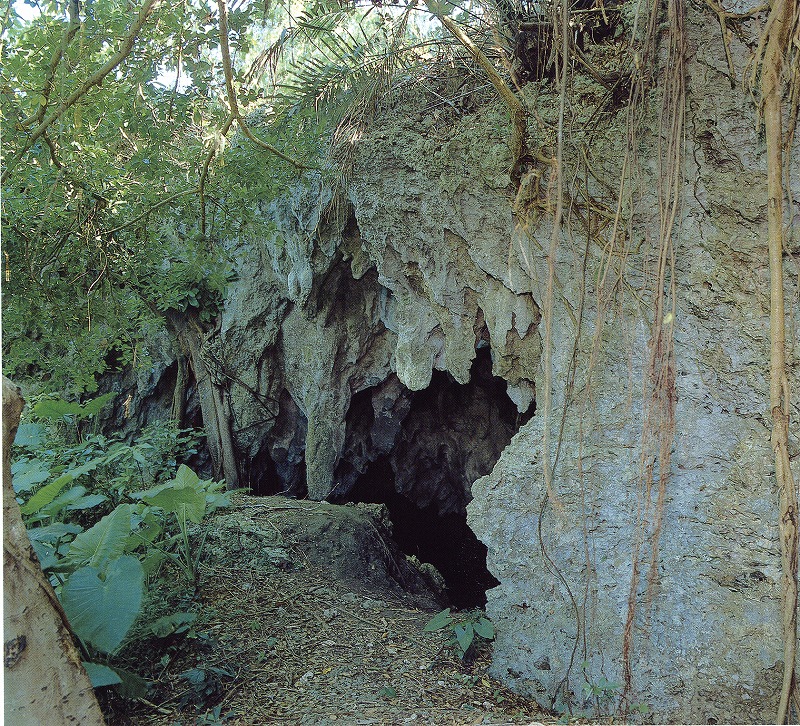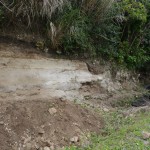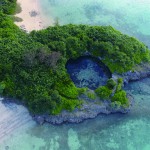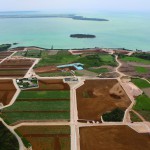【Designated by the City:Natural Monument (Geological Feature)】Tsuzupisukiabu
Located at the hills of Ohara, Shimozato in Hirara, and also referred to as Tsuzukipisukiabu or Tuzuhikihora, this is one of the largest caves found within the city. It has the following characteristics:
1. It has a long horizontal passage, measuring approximately 85m in length from the depressed opening at the northern part of the cave to the opening at the southern end.
2. Doline depressions have developed in the front area of the northern end of the cave, and we can see environmental indicator plants such as the Okusaboku, Asian taro, and others.
3. The cave floor is thick with deposits and although there are no flowing water or pools, there is a well-developed bell hole, showing the formative and mystic beauty of nature.
4. As a horizontal cave found at the middle terrace of the hills, it has important features that give us a glimpse of the original form and the period of high sea level in Miyakojima.
5. Deer fossils have been unearthed from the deposits on the cave floors, and as the horizontal cave is widely developed, there are possibilities that other animal fossils are waiting to be discovered.
It is believed that the Tsuzukipisuabu was formed through rain and other erosion, after the deposits of the tertiary period, when the accumulated shells and coral formed protrusions and emergence through crustal movements and eustatic changes in the period of Ryukyu Sango-Kai period (approximately several hundred thousand years ago). It is believed to be a cave from the ancient past, together with the Nakahara Cave in the Gusukube district, and the Pinzaabu in the Ueno district.
≫View on a Google Map
 宮古島アプリの綾道(あやんつ)トップページ
宮古島アプリの綾道(あやんつ)トップページ 宮古島アプリの綾道(あやんつ)の内容
宮古島アプリの綾道(あやんつ)の内容 宮古島の3つのルート
宮古島の3つのルート 宮古島市長のあいさつ
宮古島市長のあいさつ 宮古島文化遺産紹介
宮古島文化遺産紹介








